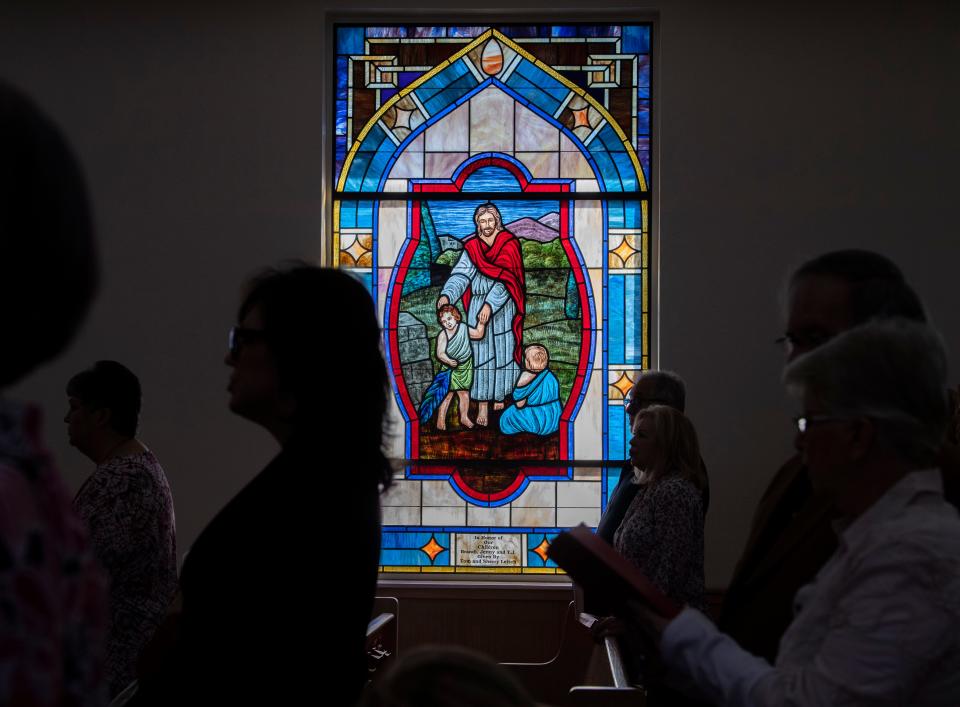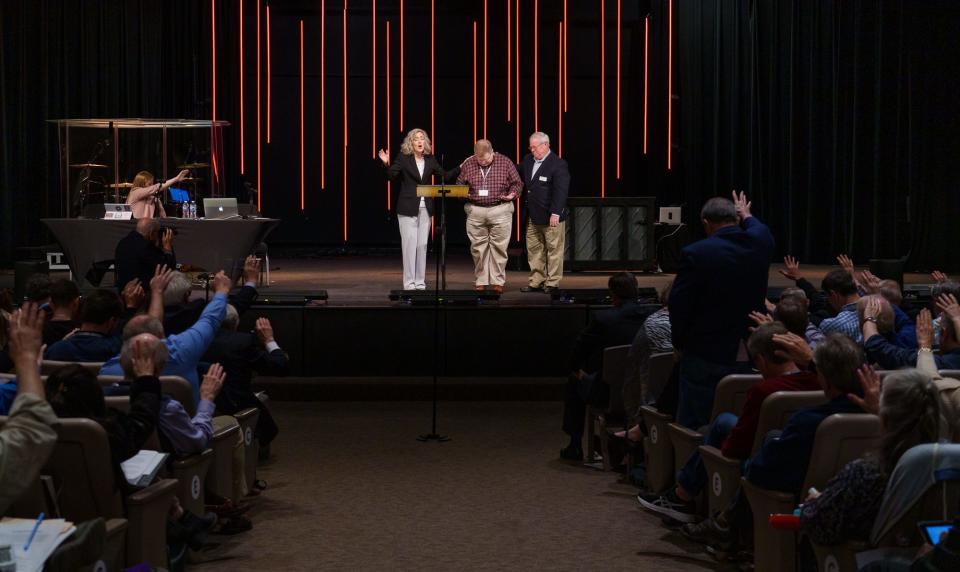United Methodist Church disaffiliation in US largely white, Southern & male-led: Report
The traditionalist exodus out of the United Methodist Church in the U.S. is definitively white, Southern and male-led, according to a scholarly analysis of the most recent available data.
The report is the second of its kind from the Lewis Center for Church Leadership, a research center out of the UMC-affiliated Wesley Theological Seminary in Washington D.C., using a much larger data set than the first.
The new report shows that of the 6,000-plus churches that have left the UMC, through a process called disaffiliation, 70% of are in the denomination’s two Southern jurisdictions and 98% are majority white. More churches are expected to leave the UMC by the end of the year and lead researcher Lovett Weems, emeritus distinguished professor at Wesley, expects the trends to stay the same.
“When we had the first 2,000, there was pushback the trends would change. But they really didn’t,” Weems said, comparing the newest report with the first one released in February using data through the end of 2022. “There’s no reason at this point” to expect a drastic change, Weems added.

Amid a splintering following disagreements over theology and church policy, including dealing with LGBTQ rights, churches have been leaving the UMC since 2019 and many are joining the Global Methodist Church, a more conservative breakaway denomination. Many UMC general agencies are based in Nashville, Tennessee.
At a special session of the UMC General Conference in 2019, delegates approved the temporary policy of disaffiliation, specifically called Paragraph 2553 of the UMC Book of Discipline, allowing churches to leave the denomination and retain their property in exchange for an exit fee. That policy is set to expire by the end of the year, though some annual conferences are looking at ways to extend it.
Delegates of annual conferences, or the UMC’s system of regional authority, ratify disaffiliations during regular annual meetings or special sessions. More than 4,000 churches have disaffiliated just this year, and more are expected later this year during 20 additional annual conference special sessions.
The Lewis Center’s study compares the names of disaffiliated churches with churches’ annual membership data reported in 2019. The report compares data of disaffiliated churches with that of the entire UMC.
Fifty-six percent of all UMC churches are in the denomination’s two Southern jurisdictions and 90% are white. In other words, statistics about disaffiliated churches are an exacerbated representation of the entire denomination.
Similarly, 71% of all UMC churches have male pastors versus 84% of disaffiliated churches. Disaffiliated churches have a slightly higher percentage of pastors who are part-time local pastors, lay supplied and retired. Among all UMC churches, there’s a higher percentage of pastors who are full-time, active elders.
The average membership size for all UMC churches versus disaffiliated churches is the same: 38.
‘Overwhelmingly Southern’
The Global Methodist Church and Wesleyan Covenant Association, an advocacy group within the UMC advocating for disaffiliation, have noted pro-disaffiliation sentiment in other countries, such as African countries and the Philippines, as examples of the traditionalist movement’s diverse appeal.
However, disaffiliation among churches in those countries has become less certain and the context is very different than that of U.S.-based churches.
“The WCA is humbled to see what God has done in our midst: freeing almost 6,300 churches so far with more to come,” said Jay Therrell, president of the Wesleyan Covenant Association, in a statement about the new Lewis Center report.
“These churches come from across the United States and around the world,” Therrell said. “Orthodox Wesleyanism is growing, and we are excited to see how the Holy Spirit will continue to breathe a fresh wind in the coming years.”
Revitalizing a ‘lost art’: How young Sikhs are reconnecting with music, changing religious practice

Weems said the distribution of disaffiliation coincides with a cultural divide that dates back to the denomination’s last major schism with the Methodist Episcopal Church (South) from 1844-1939.
"With the current splintering, I expected it to be overwhelmingly southern,” Weems said. “Part of that is because there have been different churches within one church.”
After the Methodist Episcopal Church (South) reunited with the denomination, “it’s been a fit but not always a comfortable fit,” Weems said.
The higher percentage of disaffiliations in the South might affect the UMC annual conferences in the region more, such as the number of paid staff and their responsibilities, Weems said. Also, it’s possible to see additional consolidation of areas that a single bishop oversees.
“There’s going to be downsizing to make this possible,” Weems said.
For subscribers: How a Gospel album featuring a drag queen topped Christian music charts
Liam Adams covers religion for The Tennessean. Reach him at ladams@tennessean.com or on Twitter and Threads @liamsadams.
This article originally appeared on Nashville Tennessean: UMC disaffiliations mostly white, Southern, male-led: New report

